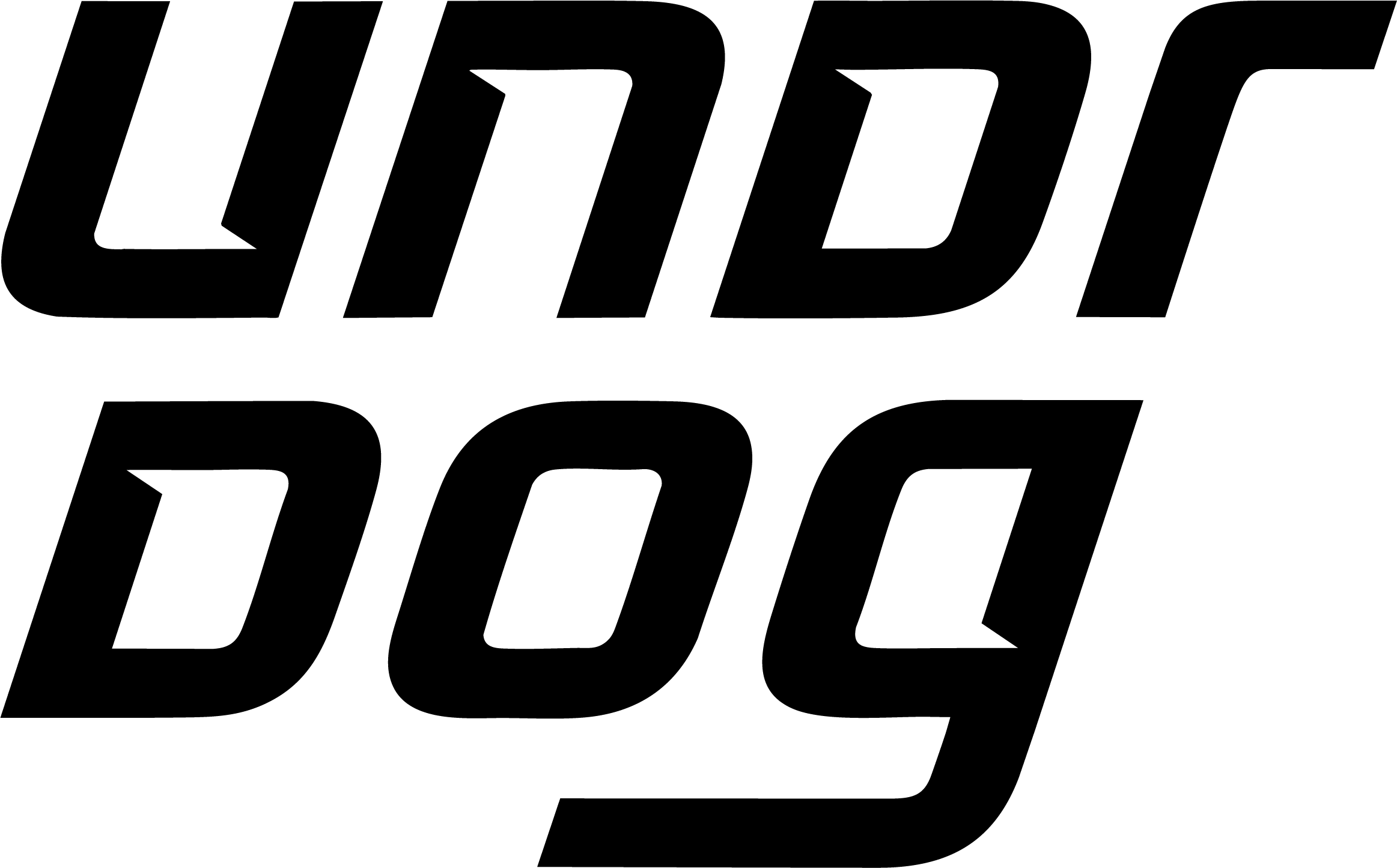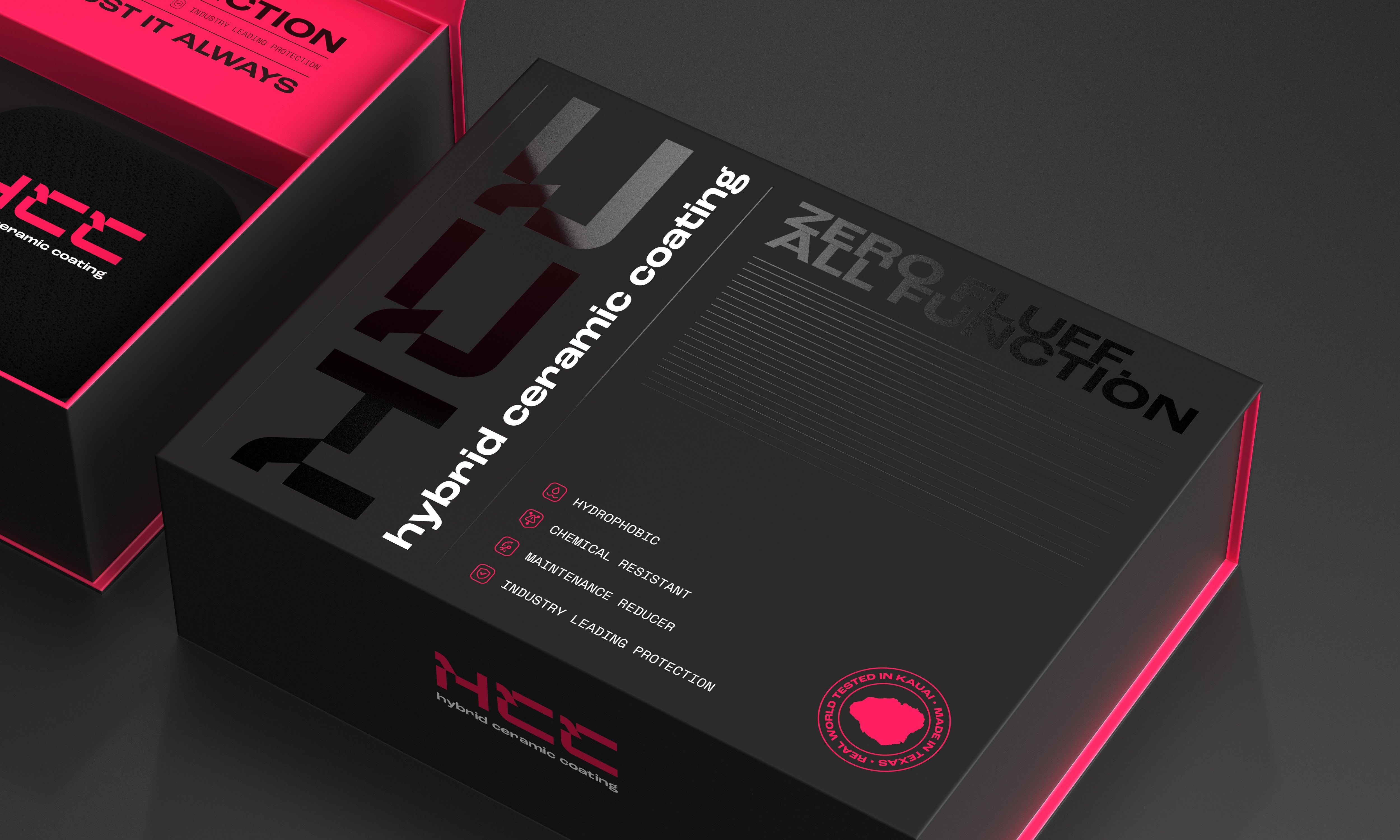Table of Contents
Detailing business owners know how tough attracting new customers can be.
Sometimes the business is booming and you’re booked out for the next two weeks. Other times things are so slow that you start feeling frustrated and discouraged, wondering if becoming a detailer was the right choice after all.
Thankfully, there is a way to change that for good. It’s called SEO.
What is SEO?

SEO stands for search engine optimization. And although the term might sound complicated, it’s really not. Essentially, SEO is the practice of making your website more attractive to search engines, most notably the biggest of them all - Google.
By optimizing your website for SEO, you can improve its ranking in search engine results, which leads to more traffic. Website traffic means more prospects learning about your business, checking out your services, and potentially becoming customers. So basically, better SEO = more business.
Think of it like this: SEO is the ultimate wingman for your website. It will introduce you to the right people, your future customers, and help you leave a great impression.
In this practical guide, we'll be taking a deep dive into the world of SEO and show you how to use it to grow your detailing business. Whether you're a seasoned pro or just getting started, whether you know plenty about SEO or have never even heard of it, we've got you covered.
The Benefits of SEO for Detailing Businesses
SEO has numerous benefits for local small businesses. Here are a few major ones:
- More Website Traffic
SEO can help to increase brand awareness and bring more traffic to your company’s site. And not just any traffic - we're talking about organic traffic from people who are actively searching for detailing services in your area. By optimizing your site for local keywords and getting listed in local directories, you will improve your chances of showing up in local search results and attracting hot leads who are ready to book your services.
- Credibility and Authority
With high-quality website content optimized for relevant keywords, you’re showing search engines and, more importantly, potential customers that you're an expert in your field. That’s great because when people trust you, they're more likely to choose your services over your competitors. Especially when it comes to an industry like detailing, where customers have to let you handle one of their most prized possessions.

- Better User Experience
No one likes a bad website. You know the ones - slow loading times, outdated, confusing layouts, and pop-ups that just won't quit. If yours is anything like this, it’s time for a revamp. Why? Because when people come to a website, they want to be able to find what they’re looking for in a matter of seconds. This is referred to as user-friendliness. It’s significant for SEO because it keeps prospects on your site longer, increasing the likelihood that they’ll engage with your content and book your services.
- Cost-effective Marketing
SEO is free unless you want to take it very seriously and invest in a tool like Ahrefs, Semrush, Moz, or Bright Local. And even if you do pay a subscription for SEO software, it’s still going to be a lot cheaper than traditional advertising and many forms of digital marketing available today. Plus, SEO always provides a good ROI (return on investment) if you know how to do it, unlike other marketing tactics which may or may not succeed.
So, how do you go about improving your website SEO? Keep reading to find out!
Keyword Research
The first step you need to take to improve your SEO is to conduct extensive keyword research.

We’re going to be honest with you here and admit that keyword research isn’t a fun activity. Well, at least not for most people. But it’s super-valuable knowing exactly which words and phrases your prospects are using when they’re searching for local detailing services online.
Identify Target Keywords
To get started, consider the services you offer and everything that makes your business unique. For example, if you specialize in high-end car detailing, write down keywords like “luxury car detailing” and “premium detailing services”. The same logic applies to mobile detailers specializing in ceramic coatings, detail shops that do PPF and window tinting, etc.
The goal here is to come up with a list of potential keywords you will want to target. Once you have a decently sized list, use a free tool like Google Keyword Planner or Wordstream to see how often those keywords are searched for and how competitive they are. Ideally, you want to identify keywords that are highly relevant to your business, have low competition, and a high search volume.

If you’d like to learn more about how to use Google Keyword Planner for keyword research, here’s a great article by Search Engine Journal you should check out.
Research The Competition
Before you finalize your list of viable keywords, it’s a good idea to look at what your competitors are doing. To see which keywords detail shops in your area are targeting, enter their domain into a free SEO competitor analysis tool. This will allow you to identify gaps in their content and find even more ranking opportunities for your site.
On-Page Optimization
The next step for SEO optimization is tackling your site’s on-page elements. This means finding all the places you can use your target keywords, including title tags, meta descriptions, headings, body, and alt text.

Update Titles, Headings & Meta Descriptions
Title tags and meta descriptions are the snippets of text that appear in search engine results (SERPs). They should accurately describe what a page is about and include a target keyword. For example, if you want to rank for the keyword "mobile detailing services," your title tag could be "Professional Mobile Detailing Services - Detailers Near Me."
Headings and sub-headings (most notably H1 & H2) help organize your content and make it easier for search engines to understand and for people to follow. To optimize them for SEO, always include an H1 tag, but only one per page, and make sure it contains the primary keyword. As for sub-headings, they need to be related to your H1 but can focus on long-tail keywords or those that are not as significant.
Optimize Body Content & Images
The body is where the bulk of your content will be. To optimize it for SEO, produce high-quality, original content that’s more than 150 words long. Keep in mind that 150 words is the minimum number of words a web page should contain. Optimally, you will also have pages on your website with long-form content which is significantly more effective in helping you rank higher in search results. In terms of keywords, it’s crucial that you use them throughout your body. However, tread carefully here. Keyword stuffing or overusing certain keywords can actually hurt your SEO. Instead, include keywords naturally, aiming to write for people, not for search engines.
Pro tip: a smart way to get avoid keyword stuffing is using singular and plural versions of your keywords or resorting to keyword synonyms when appropriate.

Images are another element you should optimize. Make sure the file names of your website images are descriptive and always include alt text with target keywords. This not only helps search engines understand what your visuals are about but also improves accessibility for visually impaired readers.
Examine Internal Links & URL Structure
At this stage, you’ll also want to look at your internal linking strategy and the structure of your URLs.
Internal linking means linking to other pages on your website that are relevant to the content on the page you're optimizing. This helps search engines understand the structure of your website and can improve the user experience. Let’s say you have a page on your blog that talks about the benefits of detailing for maintaining the appearance, performance, and value of a car. Within that page, you can include internal links to pages on your site that offer more information about the different type of detailing services your business offers.

Lastly, URL structure is important for both search engines and website visitors. The trick here is to use descriptive, but clean, concise URLs with relevant keywords. For example, instead of "www.bluemoondetailing.com/page12,” go with something like “www.bluemoondetails.com/ppf” or “www.bluemoondetails.com/ceramic-coating”.
Off-Page Optimization
Off-page optimization refers to the actions you take outside of your website to improve your SEO ranking. In this article, we’ll look at two simple off-page SEO strategies. However, if want to explore other options, give this blog post a read.
Get Quality Backlinks
Link building is the process of getting other websites to link back to yours. If done properly, this can improve your domain authority which in turn improves your rank in search engine results.

Here are 3 easy link-building techniques that you can put to use right now:
Ask Your Partners: If you have business partners and preferred brands of detailing products, ask them to link to your site. This is especially effective if your associates have websites with high domain authority.
Find Unlinked Mentions: Sometimes (more often than you think), people mention your business online without linking to your site. To find these mentions, Google your business name like this “intext: business name”.
Do Guest Posts & Collabs: One of the most effective ways to get relevant backlinks is to reach out to industry blogs, local businesses, and news sites offering to guest post or collaborate on content creation.
There are many other great link-building techniques out there, but remember that ultimately, the best way to build your website’s backlink profile is to create engaging content that people naturally want to link to. Things like how-to guides and tutorials, as well as visual assets like infographics and charts do especially well in this realm.
Pro tip: Avoid any shady link-building practices that can hurt your SEO.
Boost Your Local SEO

Local SEO is crucial for detailers, both mobile operators and detail shops, as it helps your business appear in search results when people are looking for detailing services in their area. This means you will be able to attract people actively looking for services you offer within a specific geographic area. Awesome, isn’t it?
By optimizing for local SEO, you can get ahead of the competition and make your business more visible to potential customers.
Here are a couple of tips for local SEO:
Use local keywords: location-based keywords are a great way to signal to Google where your business is located and which areas it services so that it shows your website to the right people.
Optimize your GBP listing: we wrote an article on how (and why) to optimize your Google Business listing for success. In short, if you’re not making use of this free tool to the fullest, you need to start - like right now.
Get listed in local directories: Apart from GBP, there are many other business directories where you can list your business. This not only makes it easier for people to find you but also improves your credibility in the eyes of Google. Here’s a comprehensive list of directories you might want to consider, but we suggest you focus on local listings and business associations first.

Technical SEO
Technical SEO is an important part of search engine optimization, but this is where things get a bit tricky for us regular folk.

Don’t worry. We won’t be going into the complex stuff here. Let’s just look at the basics - things you really need to know about technical SEO as a detailing business owner.
First things first: what is technical SEO? Well, as the name suggests, technical SEO refers to the optimization of your website's technical elements. This includes site speed, mobile-friendliness, site architecture, and schema markup.
Site Speed
In general, faster websites rank higher in Google. This means that if your site is slow-loading, this can negatively impact your SEO ranking. Plus, people will be much more likely to click away if your web pages don’t load quickly.
To identify issues with your loading speed use a free tool like Google PageSpeed Insights. If you find any, look into these 5 practical tips to improve site speed.
Mobile-friendliness

More and more people are using their phones to access the internet nowadays, and this trend isn’t going away. Because of that, it’s pivotal to optimize your website for navigation on smartphones and tablets.
We recommend that you use Google's Mobile-Friendly Test to check if your site needs any changes. If you find that it does, check out this mobile optimization guide for local businesses.
Site Architecture
Site architecture is the organization and structure of your website, which impacts how easy it is for search engines to crawl and index your pages.
The right way for structuring your site is by using categories and subcategories to organize your content and make navigation as straightforward as possible. If you’re interested in learning more about this topic, here’s a great read on the basics of site architecture for local small businesses you will appreciate.
Schema Markup

Schema markup, also known as structured data, is a type of microdata that helps Google understand the content on your website.
Bear with us here.
Think of schema markup as GPS for your website. It helps search engines navigate it by displaying content in a language they can understand - code.
Thankfully, Google has made it fairly easy for us to generate structured data for our content. Here’s a guide you can follow that breaks it down into manageable steps.
Analytics and Tracking
Now that you have optimized your website for SEO, it makes sense to measure your results and make adjustments over time. Right? Well, duh!
We suggest using Google Analytics and Google Search Console for this purpose, as they allow you to track a wide range of useful metrics such as the number of web visitors you’re getting, where they’re coming from, and how they’re interacting with your content. As a bonus, these handy tools are completely free!
If you haven’t set up your Google Analytics account yet, here’s a simple guide by Hootsuite. As for Google Search Console, check out this tutorial for beginners.

As for KPIs, here are some that you probably want to track:
Organic Traffic
Search Visibility
Keyword Rankings
Backlinks
Bounce Rate
Session Duration
To Sum Up
In today’s digital age, one of the best ways to make your detailing business visible to potential customers is through Search Engine Optimization.
By finding the right terms to rank for through keyword and competitor research, optimizing your on-page and off-page assets, and implementing best practices when it comes to technical SEO, you can get more website visitors actively searching for detailers in your area, which means your business will grow and thrive.
Investing time and energy into optimizing your site for search engines might seem like a daunting task, but it’s well worth the effort. Hopefully, we made it easier for you with this practical guide!





34 comments
inyourdreamspdflaf
Unlock the potential of your tablet with the In Your Dreams PDF. It transforms your device into a portal for literature, proving that screens are good for more than just social media. https://inyourdreamspdf.top/ In Your Dreams Romance Novel Pdf
sunriseonthereapinlaf
Sunrise on the Reaping offers Suzanne Collins’ powerful exploration of trauma and resilience. This PDF prequel follows sixteen-year-old Haymitch during the fiftieth Hunger Games. Discover why he became Katniss’s jaded mentor. Get your free instant download without any registration required. https://sunriseonthereapingpdf.top/ How Old Is Haymitch In Sunrise On The Reaping
lightsoutpdflaf
Experience the Lights Out PDF with fully functional hyperlinks and bookmarks. We ensure the digital navigation features work perfectly. It is a user-friendly document ready for your exploration. https://lightsoutpdf.top/ Lights Out: An Into Darkness Novel
ComoMandarPDFlaf
El respeto empieza por uno mismo, aprende a exigirlo con elegancia descargando este material, descubre las claves para mandar a la media cualquier trato indigno de forma educada y firme, estableciendo un estándar alto en tus relaciones. https://comomandaralamediadeformaeducadapdf.cyou/ Como Mandar A La Media De Forma Educada Libro
paul
<ahref=“https://directpharmacyuk.com/index.php/product/roxicodone/” rel="dofollow">Roxicodone 30mg<ahref=“https://directpharmacyuk.com/index.php/product/ritalin-10mg/” rel="dofollow">Ritalin 10mg<ahref=“https://directpharmacyuk.com/index.php/product/buy-subutex-online/” rel="dofollow">Subutex 2mg (Sublingual tablets)<ahref=“https://directpharmacyuk.com/index.php/product/buy-xanax/” rel="dofollow">Xanax (Alprazolam)<ahref=“https://directpharmacyuk.com/index.php/product/buy-diazepam/” rel="dofollow">Diazepam 10mg<ahref=“https://directpharmacyuk.com/index.php/product/soma-350mg/” rel="dofollow">Soma (Carisoprodol) 350mg<ahref=“https://directpharmacyuk.com/index.php/product/buy-demerol-online/” rel="dofollow">Demerol (Meperidine) 50mg/30ml Ampul<ahref=“https://directpharmacyuk.com/index.php/product/buy-codeine-30mg/” rel="dofollow">Codeine 30mg Tablets<ahref=“https://directpharmacyuk.com/index.php/product/adderall-xr-uk/” rel="dofollow">Adderall XR 10mg<ahref=“https://directpharmacyuk.com/index.php/product/buy-subutex/” rel="dofollow">Subutex 8mg (Sublingual tablets)<ahref=“https://directpharmacyuk.com/index.php/product/percocet-uk/” rel="dofollow">Percocet (oxycodone/acetaminophen) 5mg/325mg<ahref=“https://directpharmacyuk.com/index.php/product/arimidex-uk/” rel="dofollow">Arimidex (Anastrozole) 1mg<ahref=“https://directpharmacyuk.com/index.php/product/buy-tramadol-online-uk/” rel="dofollow">Tramadol 100mg Tablets<ahref=“https://directpharmacyuk.com/index.php/product/zolpidem-uk/” rel="dofollow">Stilnox (Zolpidem) 10mg<ahref=“https://directpharmacyuk.com/index.php/product/buy-tramadol-online-uk/” rel="dofollow">Tramadol 100mg Tablets<ahref=“https://directpharmacyuk.com/index.php/product/mifepristone-uk/” rel="dofollow">Mifepristone 10mg Tablet<ahref=“https://directpharmacyuk.com/index.php/product/dihydrocodeine-30mg/” rel="dofollow">Dihydrocodeine<ahref=“https://directpharmacyuk.com/index.php/product/pregabalin-bnf/” rel="dofollow">Pregabalin Capsules 30mg (Lyrica)<ahref=“https://directpharmacyuk.com/index.php/product/adderall-uk/” rel="dofollow">Adderall 5mg – 25mg Tablets<ahref=“https://directpharmacyuk.com/index.php/product/xanax-uk/” rel="dofollow">Buy Xanax 0.25mg <ahref=“https://directpharmacyuk.com/index.php/product/codeine-phosphate-30mg-tablets/” rel="dofollow">Codeine Phosphate 30mg Tablets<ahref=“https://directpharmacyuk.com/index.php/product/arnicare-cream/” rel="dofollow">Arnicare cream<ahref=“https://directpharmacyuk.com/index.php/product/arnicare/” rel="dofollow">Arnicare<ahref=“https://directpharmacyuk.com/index.php/product/paxlovid-uk/” rel="dofollow">Paxlovid<ahref=“https://directpharmacyuk.com/index.php/product/apetamin/” rel="dofollow">
Apetamin<ahref=“https://directpharmacyuk.com/index.php/product/orajel/” rel="dofollow">Orajel<ahref=“https://directpharmacyuk.com/index.php/product/orajel-extra-strength/” rel="dofollow">Orajel extra strength<ahref=“https://directpharmacyuk.com/index.php/product/orajel-dental-gel/” rel="dofollow">Orajel dental gel<ahref=“https://directpharmacyuk.com/index.php/product/tylenol-uk/” rel="dofollow">Tylenol<ahref=“https://directpharmacyuk.com/index.php/product/levonelle/” rel="dofollow">Levonelle<ahref=“https://directpharmacyuk.com/index.php/product/impryl/” rel="dofollow">
Impryl<ahref=“https://directpharmacyuk.com/index.php/product/lovima/” rel="dofollow">Lovima<ahref=“https://directpharmacyuk.com/index.php/product/zelleta/” rel="dofollow">Zelleta<ahref=“https://directpharmacyuk.com/index.php/product/cilique-pill/” rel="dofollow">Clique<ahref=“https://directpharmacyuk.com/index.php/product/priligy/” rel="dofollow">Priligy<ahref=“https://directpharmacyuk.com/index.php/product/avomine/” rel="dofollow">Avomine<ahref=“https://directpharmacyuk.com/index.php/product/eroxon/” rel="dofollow">Eroxon<ahref=“https://directpharmacyuk.com/index.php/product/lansoprazole-30mg/” rel="dofollow">Lansoprazole<ahref=“https://directpharmacyuk.com/index.php/product/utovlan/” rel="dofollow">Utovlan<ahref=“https://directpharmacyuk.com/index.php/product/stemetil/” rel="dofollow">Stemetil<ahref=“https://directpharmacyuk.com/index.php/product/wellbutrin-uk/” rel="dofollow">wellbutrin<ahref=“https://directpharmacyuk.com/index.php/product/solpadeine/” rel="dofollow">Solpadeine<ahref=“https://directpharmacyuk.com/index.php/product/solpadeine-max/” rel="dofollow">Solpadeine max<ahref=“https://directpharmacyuk.com/index.php/product/solpadeine-max-soluble/” rel="dofollow">Solpadeine max soluble<ahref=“https://directpharmacyuk.com/index.php/product/solpadeine-plus/” rel="dofollow">Solpadeine plus<ahref=“https://directpharmacyuk.com/index.php/product/nitrofurantoin-bnf/” rel="dofollow">Nitrofurantoin<ahref=“https://directpharmacyuk.com/index.php/product/naproxen-bnf/” rel="dofollow">Naproxen<ahref=“https://directpharmacyuk.com/index.php/product/ciprofloxacin-bnf/” rel="dofollow">Ciprofloxacin<ahref=“https://directpharmacyuk.com/index.php/product/benadryl-allergy/” rel="dofollow">Benadryl Allergy<ahref=“https://directpharmacyuk.com/index.php/product/benadryl-allergy-relief/” rel="dofollow">Benadryl allergy relief<ahref=“https://directpharmacyuk.com/index.php/product/sudafed-tablets/” rel="dofollow">sudafed<ahref=“https://directpharmacyuk.com/index.php/product/sudafed-sinus/” rel="dofollow">Sudafed max strength<ahref=“https://directpharmacyuk.com/index.php/product/panadol/” rel="dofollow">Panadol<ahref=“https://directpharmacyuk.com/index.php/product/panadol-extra/” rel="dofollow">Panadol extra<ahref=“https://directpharmacyuk.com/index.php/product/sominex/” rel="dofollow">Sominex<ahref=“https://directpharmacyuk.com/index.php/product/nitrazepam/” rel="dofollow">nitrazepam<ahref=“https://directpharmacyuk.com/index.php/product/allevia/” rel="dofollow">Allevia<ahref=“https://directpharmacyuk.com/index.php/product/prochlorperazine-5mg/” rel="dofollow">prochlorperazine<ahref=“https://directpharmacyuk.com/index.php/product/adaptil/” rel="dofollow">Adaptil<ahref=“https://directpharmacyuk.com/index.php/product/fexofenadine-120mg/” rel="dofollow">Fexofenadine 120mg<ahref=“https://directpharmacyuk.com/index.php/product/fexofenadine-180mg/” rel="dofollow">Fexofenadine 180mg<ahref=“https://directpharmacyuk.com/index.php/product/qlaira/” rel="dofollow">Qlaira<ahref=“https://directpharmacyuk.com/index.php/product/melatonin-uk/” rel="dofollow">Melatonin<ahref=“https://directpharmacyuk.com/index.php/product/rivotril/” rel="dofollow">Rivotril<ahref=“https://directpharmacyuk.com/index.php/product/nytol/” rel="dofollow">Nytol<ahref=“https://directpharmacyuk.com/index.php/product/nytol-herbal/” rel="dofollow">Nytol herbal<ahref=“https://directpharmacyuk.com/index.php/product/buy-modafinil/” rel="dofollow">Modafinil<ahref=“https://directpharmacyuk.com/index.php/product/kalms/” rel="dofollow">Kalms<ahref=“https://directpharmacyuk.com/index.php/product/kalms-night/” rel="dofollow">kalms night<ahref=“https://directpharmacyuk.com/index.php/product/circadin-2mg/” rel="dofollow">circadin<ahref=“https://directpharmacyuk.com/index.php/product/cyclizine-hydrochloride/” rel="dofollow">Cyclizine<ahref=“https://directpharmacyuk.com/index.php/product/zopiclone-7-5/” rel="dofollow">zopiclone<ahref=“https://directpharmacyuk.com/index.php/product/gedarel/” rel="dofollow">Gedarel<ahref=“https://directpharmacyuk.com/index.php/product/gedarel-20-150/” rel="dofollow">Gedarel 20/150<ahref=“https://directpharmacyuk.com/index.php/product/ksalol/” rel="dofollow">Ksalol<ahref=“https://directpharmacyuk.com/index.php/product/mounjaro-uk/” rel="dofollow">mounjaro<ahref=“https://directpharmacyuk.com/index.php/product/saxenda-uk/” rel="dofollow">Saxenda<ahref=“https://directpharmacyuk.com/index.php/product/rybelsus-uk/” rel="dofollow">Rybelsus<ahref=“https://directpharmacyuk.com/index.php/product/mysimba/” rel="dofollow">Mysimba<ahref=“https://directpharmacyuk.com/index.php/product/ozempic-uk/” rel="dofollow">Ozempic<ahref=“https://directpharmacyuk.com/index.php/product/figur-uk/” rel="dofollow">Figur<ahref=“https://directpharmacyuk.com/index.php/product/provitalize-uk/” rel="dofollow">Provitalize<ahref=“https://directpharmacyuk.com/index.php/product/orlos/” rel="dofollow">Orlos<ahref=“https://directpharmacyuk.com/index.php/product/buy-seconal-sodium/” rel="dofollow">Seconal Sodium<ahref=“https://directpharmacyuk.com/index.php/product/buy-valium/” rel="dofollow">Valium (Diazepam)<ahref=“https://directpharmacyuk.com/index.php/product/oxycodone-30mg/” rel="dofollow">Oxycodone 30mg<ahref=“https://directpharmacyuk.com/index.php/product/buy-seconal-sodium/” rel="dofollow">Seconal Sodium<ahref=“https://directpharmacyuk.com/index.php/product/methadone/” rel="dofollow">Methadone 10mg<ahref=“https://directpharmacyuk.com/index.php/product/oxycontin-uk/” rel="dofollow">Oxycontin 80mg Tablet
Leave a comment
This site is protected by hCaptcha and the hCaptcha Privacy Policy and Terms of Service apply.